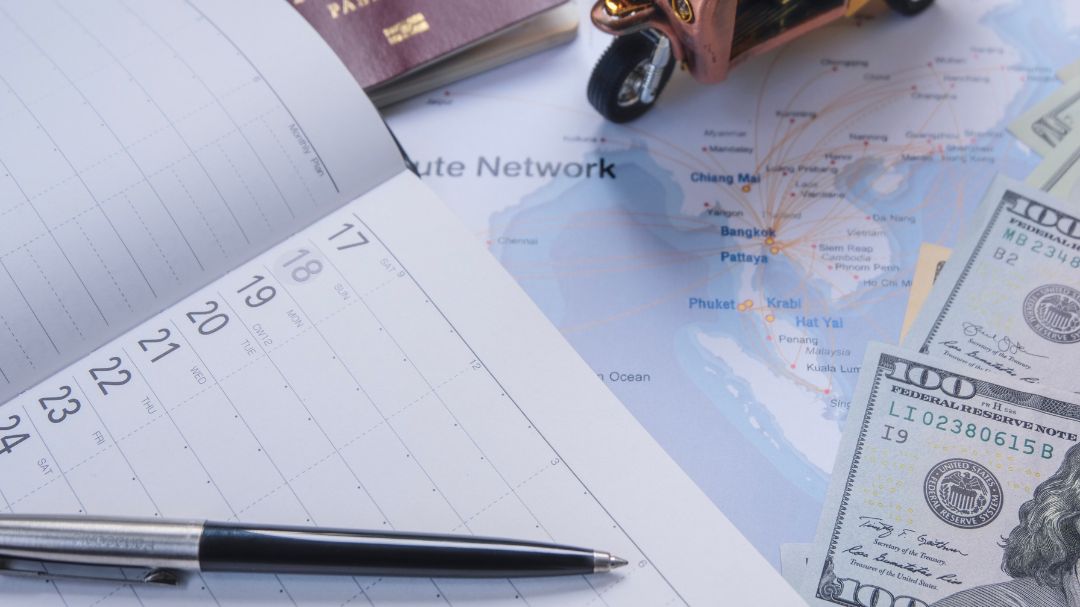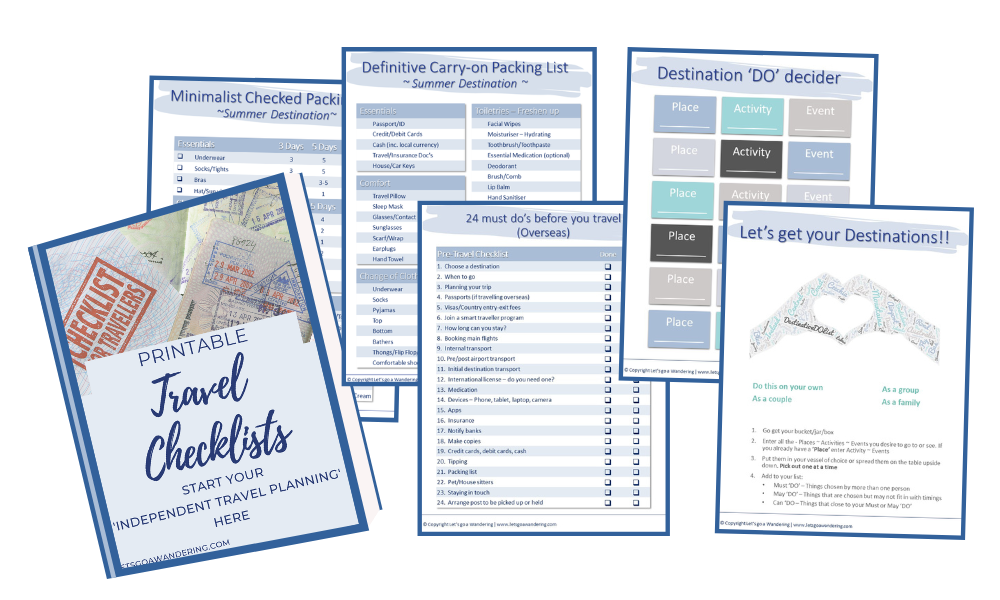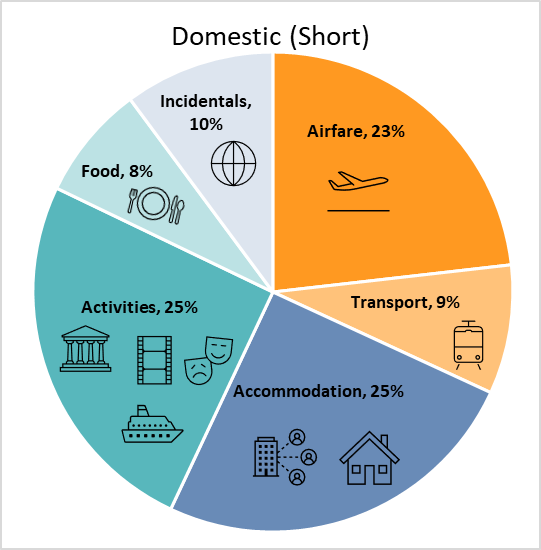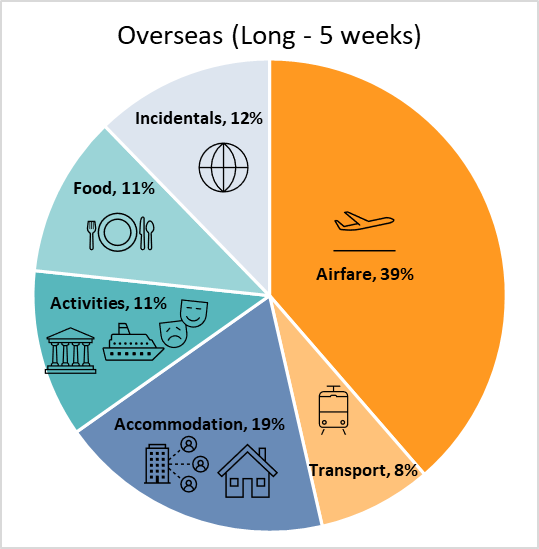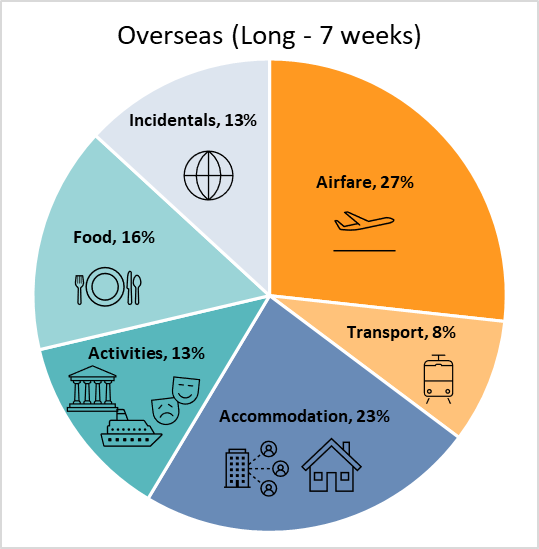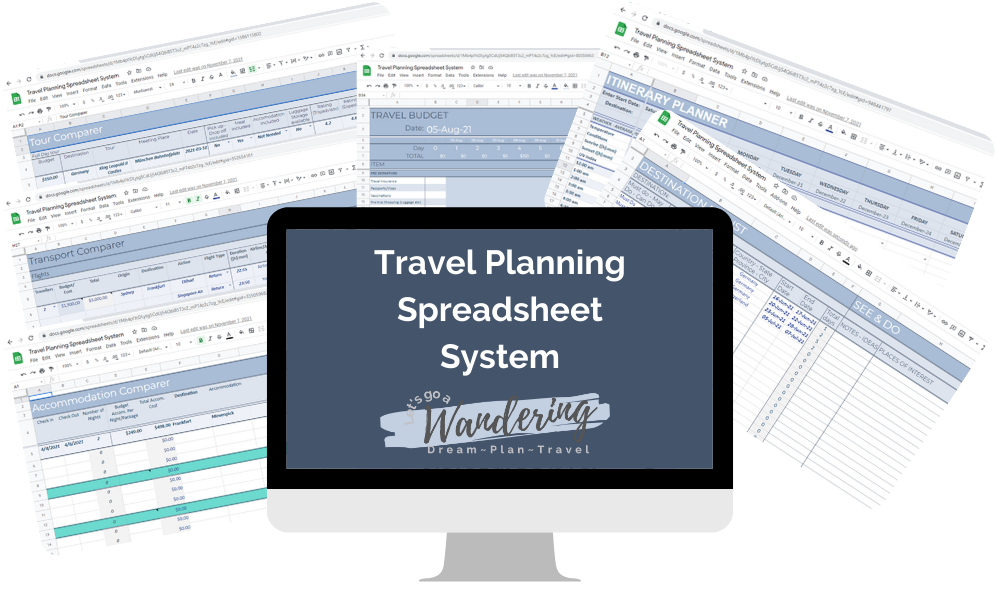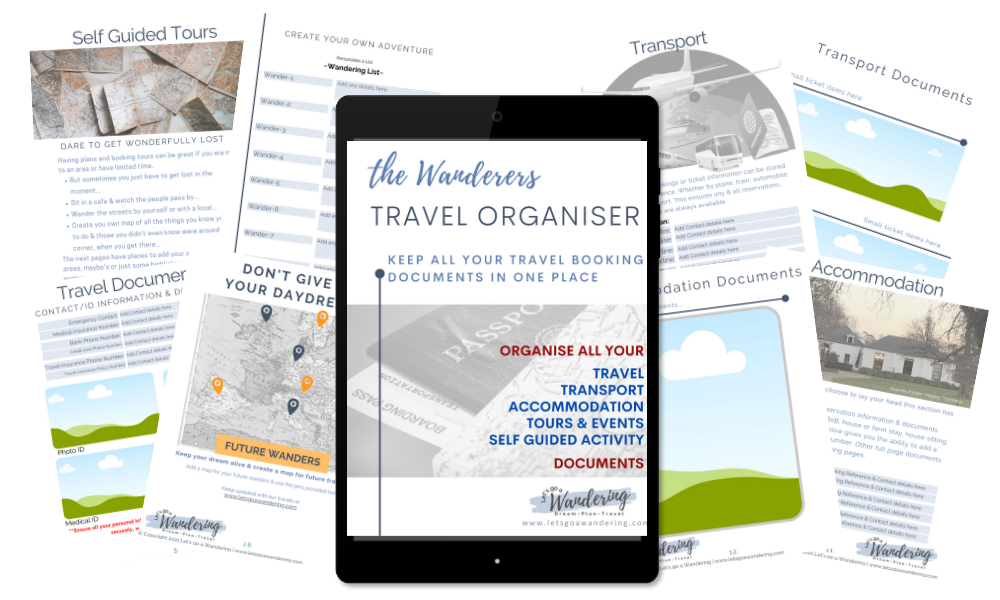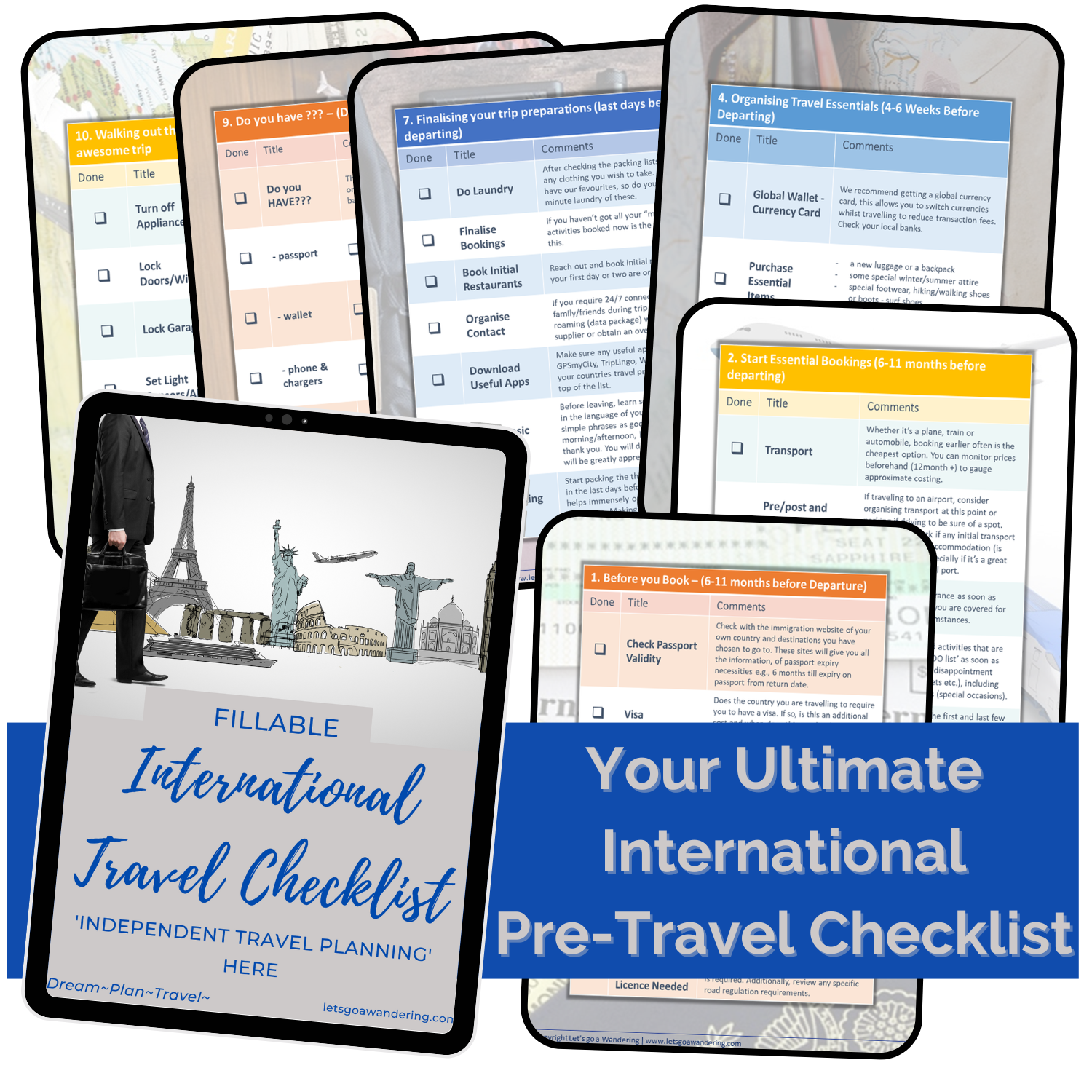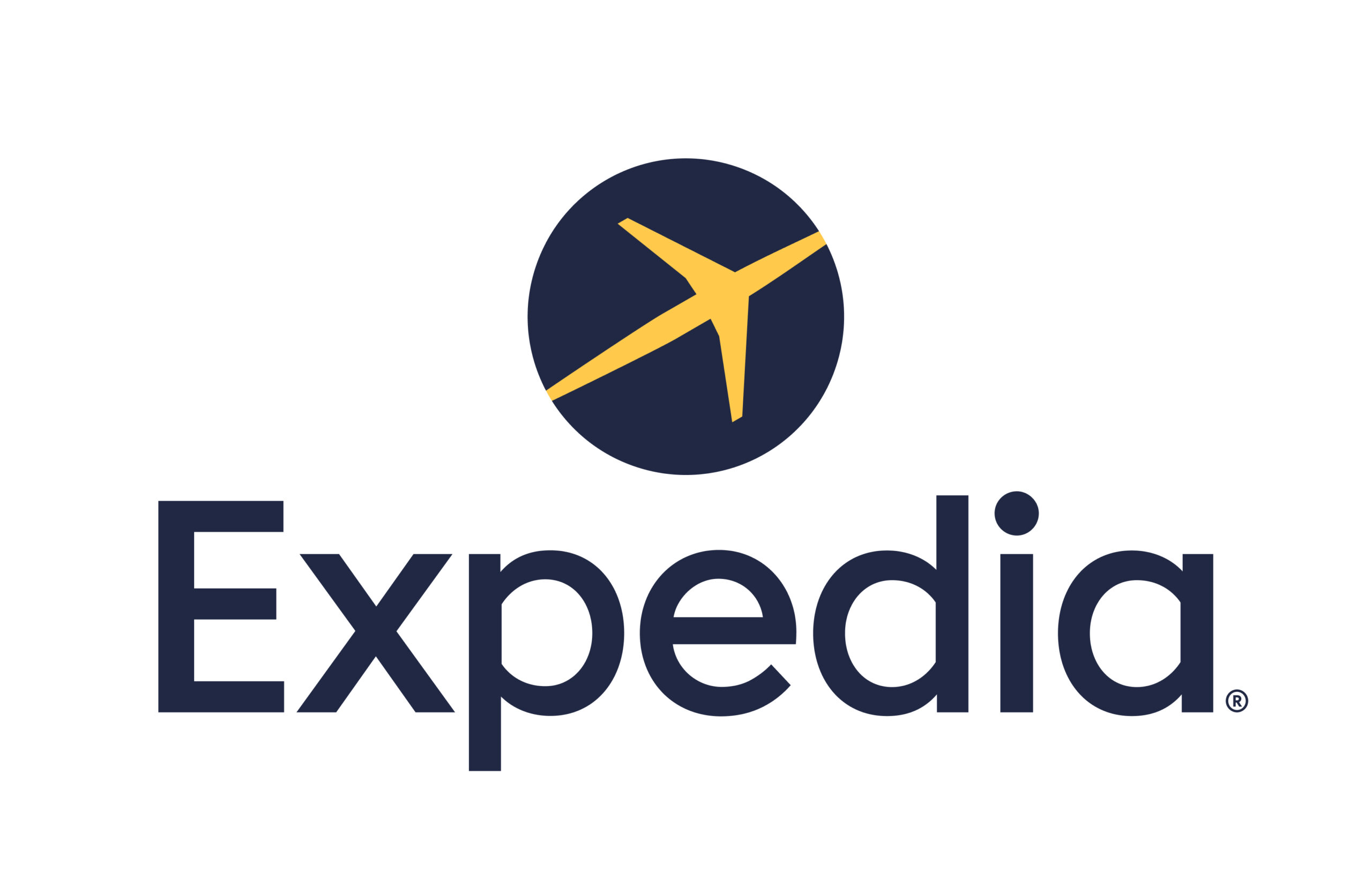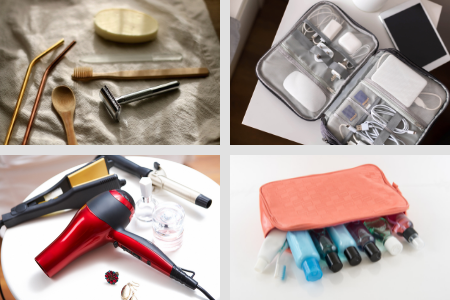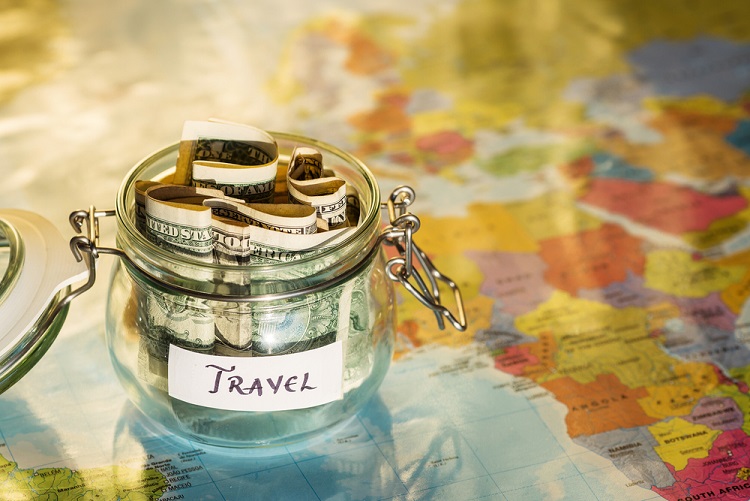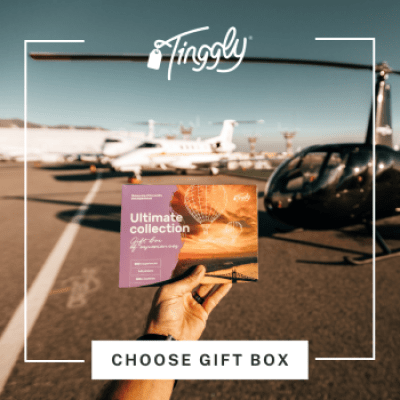Creating the perfect travel plan and budget for you
Ok…You have your chosen Destination or destinations from your ‘DO’ list, prioritised them and you are ready to go.
But wait there’s more…Next we are in the planning stage which I have to say is my favourite. Inherently a plan always includes a budget for you and your circumstances.
In fact what is travel budget and plan? If you break it down to word meaning;
- Travel (v) – going from one place to another, typically over a distance of some length
- Budget (n) – an estimate of income and expenditure for a set period of time
- Plan (n) – a detailed proposal for doing or achieving something, or an intention or decision about what one is going to do.
As you read on we have tips and resources that cover these meaning. So you don’t have to give up your daydream when creating a perfect travel plan and budget.
There is nothing more frustrating (or to me anyway), being at your chosen spot. Then finding your aren’t able to do some things on your ‘DO’ list. As you hadn’t booked ahead (tickets all sold out), it’s the wrong season (this has happened). Or you are endlessly counting pennies (this has never happened to us) as your travel plan and budget didn’t get done.
SO, what do you look at next, for me the next step is a bit of a juggle. Mostly we work our travel plan and budget together, combining both as we go. However, it’s a bit like the old argument what came first ‘the chicken or the egg’. In my opinion, budget always wins as a top priority, (so I don’t have to count pennies). To help build a travel plan and budget perfect for you, we’ve included some resources you may like.
Which includes our ‘Destination “DO” decider in the FREE travel checklists workbook can help with that. This will help greatly if you don’t have your Destination yet or haven’t prioritised, where and what order you are going in.
Our travel checklists, are the first step to start your independent your perfect travel plan and budget. Start building your own Destination ‘DO’ List, or prioritise the one you have.
Checklists for:
- Your destination DO List
- before you travel
- see and do notes
- carry on packing list – warm and cold climate
- checked in packing list – warm and cold climate
Cost overview of common travel elements
Three cost overviews have been done to give you guidance when creating your perfect travel plan and budget.
They are included as guidance, for the most common elements of a travel budget and averages.
The data used to produce these charts is real data of the breakdown of our last three trips. These include one local (short) trip, whilst the other two are from our last Europe trips. Showing how an extra 2 weeks can change the dynamics of your costs. Bear in mind the travel style for creating our perfect travel plan and budget runs between comfort and luxury.
We also keep track of any conversion rates during our planning stage using XE.com.
Here you can see at a glance for us airfare, accommodation and activities are a large part of our travel plan and budget. However, the airfare percentage reduces the longer we stay. This is another reason we choose to stay longer when embarking on travels over great distances.
This is something we recommend for you to look at when creating your perfect travel plan and budget. If you can stay longer, do stay longer. You can also save on other items such as accommodation and food using some of our tips.
*Disclosure: We may have affiliate links with one or more of these companies mentioned & may receive a small commission, at no extra cost to you, if you make a purchase through a link. Please see our full disclosures for further information.
Preview – Create YOUR perfect travel plan and budget
In this preview, we briefly highlight each tip & the area it addresses for you to create your perfect travel plan and budget. These tips have helped us plan and budget our trips for over 10 years. They can be all used together or blend one or two that fit your trip style. An ideal place to start creating your perfect itinerary.
- Travel Plan and Budget Resources – a collection of resources to assist you plan and budget for any trip.
- Knowing your where is great, but when? – making the first defining decision for your upcoming travel plans.
- Transport – How are you getting there – offers ways you can compare transport costs and some savings hints
- Accommodation – Where are you staying – information on how you can fix your choices to suit your budget
- Tours and Activities – What to see – this is a personal part of your budget, we offer you some cost saving tips we have used.
- Food – Where to eat – including various options for reducing the cost of food whilst travelling
- Incidentals – those little things – this section talks about the little sometimes unexpected things you need
- Coupons and Discounts – a look at the various ways the use of coupons and discounts can help with your overall plan and budget
- Savings and Spending – here we look at some of the systems that work for us and talk about budgeting for spending money.
Tip 1: Use some Travel Plan and Budget Resources
These resources will help you independently create the perfect travel plan and budget stress free for you. We’ve developed these tools over the last 10 years to assist you.
Destination 'Do' Decider
Enter your email and name to receive the Destination Do Decider, included in the FREE ‘Travel Checklist’ booklet with numerous essential checklists.
Travel Planning System
A spreadsheet system that allows you to plan like a pro. Comparison guides for all your booking needs, a travel budget worksheet and much more.
Travel Organiser
A template that you can edit, store and print (is optional) for all your travel documents. Have easy access to all your, contacts and bookings documents.
Travel Planner - Fillable
A fillable PDF file you can use offline to keep track of your perfect travel plan and budget. Including a travel budget worksheet pdf and checklists.
Tip 1: You don’t have to start from scratch to create your perfect travel plan and budget.
Tip 2: Knowing your where is great, but when?
When you are going on your trip is often just the beginning to defining the perfect travel plan and budget for you. As you contemplate this, you should consider a few things:
- Are there set times you have to go (due to work & school break)
- Is your trip based around an specific event (concert, festival or markets)
- Is there an activity that requires you to go at a particular time of year (birthdays, Easter, Christmas)
- Can you travel in the shoulder seasons or winter months (which are often cheaper)
- Is particular weather important to you e.g. are you following the sun
- Will you be crossing hemispheres Europe to Australia or New Zealand to North America for example.
As an example of how timing can effect your budget. During our first trip to Europe we weren’t concerned so much about space (some European hotels have small rooms) as it was summer/autumn (fall). We created our perfect travel plan and budget around being out and about during the days. At that time of year they were long so our room budget was $180AUD.
However, on our last trip to Europe, we went a bit more for comfort & space, which upped the budget ($220-250AUD). This was worth it as we were expecting the daylight hours to be shorter (start of winter), (it often was dark at 16:00 (4:00pm)). In addition to the weather to be very cold (we weren’t wrong about either of those facts).
We also had the help of a tour operator to-Europe for part of this trip when visiting the Christmas Markets. They were amazing, whilst they organised accommodation, internal transport and some tours. We still got to vary our itinerary somewhat and travel independently, all within OUR Budget.
Though, if you have no ‘must do’ or ‘want to do’ times to travel. We recommend travelling in shoulder seasons, which can greatly reduce many cost elements. This makes creating the perfect travel plan and budget for you more achievable.
Tip 2: Define your dates and the duration of your trip before looking at costings.
Tip 3: Transport – How are you getting there
One of the largest chunks of a budget is your initial mode of transport. This is one of the first things, we look at, including our final destination and the initial cost of getting there. Whether this is by plane, train or automobile, or even a boat. In many cases there isn’t a lot of variation in prices also.
For planes we use our preferred carrier to collect and use points where possible. However, this isn’t always the cheapest.
Though this can save us money, by way of points and pay or upgrades. If you use a particular airlines for points consider looking at this to reduce costs.
Living in Tasmania, Australia our travel plans usually involves at least one flight or boat trip… unless we are traveling around the state then it would definitely be automobile. Our travel planning system has some comparison guides to help decide on best pricing.
Finally, if you have no preferred airlines etc Expedia can offer you a choice of transport options. These can be sorted cheapest first, although, a caution here though, some of the cheapest fares are also the longest. Additionally check you inclusions as some cheaper flights don’t include checked baggage.
Tip 3: Check inclusions and consider using points for partial or all cost, decide if longer flights for cheaper cost are worth the savings.
Internal Transport
Another thing you need to consider is how you are getting about once you’ve reached your destination. Often this can involve walking (the cheapest), buses, trains or hire car. Our favourite travel providers can offer you choices for quickest and cheapest mode of transport.
When staying in a major city is walking, is our preference. This is very cost efficient plus you get to see more of the city.
Also, when traveling between towns we choose trains and buses mostly. This way we can create a perfect travel plan and budget tailored for us. We mostly use Eurail for all our train passes and Busbud when booking buses. With Eurail children (under 11), travelling with a full paying adult, get a free pass (conditions apply). Hiring cars are left for long journeys or multi day journeys over distances that don’t have reliable public transport.
It is highly recommended to check with the city you are visiting for any 24-72 hour City Discount Cards. These are often available through visitors information centres, Get Your Guide or other ticketing sites. Additionally, a selection of city cards are available through ‘WeGo Trip‘.
Tip 3-1: Check beforehand as to whether your destination has a travel pass that can be used for public transport.
Tip 4: Accommodation – Where are you staying
Unlike transport creating the perfect plan and budget for accommodation is more in your control. A dollar value per night can be designated for your accommodation, then you decide which offer’s best value for money. In addition to this look for deals at hotels such as stay 7 pay 6 and the likes.
By value for money, I mean looking at cost and inclusions with the base rate. The position of accommodation to transport is also an important point (no expensive cabs). For me having wi-fi included is desirable but not essential. Additionally, if I get breakfast included at no extra cost it’s a bonus but does depend on what cafes are about (and the coffee).
If you are a member of a Hotel group programme, that would be your first option. There are many inclusions that can be obtained through memberships. Additionally, there is a possibility you could be able to use points to help offset some costs, get upgrades and more.
For example our ALL – Accor Live Limitless membership (paid) gives us many benefits, such as suite upgrades, free breakfast and free wi-fi to name a few.
Alternatively, if an ALL hotel isn’t available, we use Expedia and Agoda for our alternative accommodation searches. There are a number of filters that you can apply to refine your search even more. Including but not limited to budget range, guest ratings, a selection accommodation inclusions and you own currency can be selected before you even start searching. Additionally, the map will identify restaurants close to you hotel of choice and activities in the area can be identified and booked if desired.
Accommodation types.
Another way to save on overall costs when creating your perfect travel plan and budget especially for a longer trip. Is to look for an apartment/house to stay in. Whilst you may not always get one cheaper than a hotel it’s the other things you save. We make sure all apartments we rent have washing machines and basic kitchens at minimum. This saves us time and money at a laundromat, in addition to cutting down our eating out expenses. Even when staying in hotels we have fruit and snacks to reduce costs and have healthy options.
Finally the most cost effective way to save on accommodation is to house swap. Or you may prefer to house or pet sit, these can be either long term of short term.
Our favourite resources have some options for the above, with the exception of house swapping. This is something I am looking at and will update you all as soon as I have the information.
Tip 4: Look for deals stay 7 pay for 6, stay in an apartment/house to save on incidentals. Look into home swapping or sitting when staying in one area for some time.
Our pre-travel checklists, help you start your independent travelling planning. A great guide to start the perfect travel plan and budget.
Checklists for:
- Before you travel
- organising travel essentials
- when to start dreaming and booking
- right up to the day before and walking out the door
Tip 5: Tours and Activities – What to see
Next step for creating your perfect travel plan and budget, is tours and activities. I say next, however if you have used the Destination ‘DO’ decider for events and activities. You will already have a broad plan of what you are doing.
We strongly recommend using a company that offers skip-the-line options for any ‘must do’ activities. Based on past experiences we have found, this saves disappointment and time waaiting especially if you are limited on time. These may be slightly more expensive but worth the few dollars.
That said our perfect plan and budget includes almost free walking tours (tour for tips) or self-guided walks. Also, for me hop-on-hop-off buses, I love to get the feel of a place. Thus, for me there is no better way (or in my mind) than wandering the streets with a local. They will even show you some of the ‘secret’ and not so ‘hidden’ gems of a city.
Some options for almost free tours are available in our favourite resources. Additionally look for city cards, these offer free or heavily discounted entry to various attractions throughout the city.
Tip 5: Look for free or self-guided walking tours and skip-the-line tours.
Tip 6: Food – Where to eat
When travelling we eat out mostly, though we always visit the supermarkets for snacks and fruits that we like. That said I always do some research on the average cost of cafés, bars and restaurants in the area. This gives us an approximate value to assign daily. Whilst this is an arbitrary number it does give a base for formulating food expenditure for your perfect plan and budget.
Alternatively, you may find eating at a restaurant for lunch is cheaper than the evening. We do this occasionally and just eat a grazing platter for our evening meal.
From experience I have found some days we go over other days we don’t spend it all. We also recommend due to seating restrictions it is best to book beforehand.
During our almost free tours I always ask the guides for their recommendations of places to eat. I love eating in local areas or picking up street food, popping into a bakery, which is often a cheap option. If we have any special occasions (birthday, anniversary etc.) I add these separately and usually classify as an event. The coupon section may also have some helpful information for your perfect travel plan and itinerary.
Tip 6: Eat local, buy snacks and fruit from supermarkets, look for deals e.g. buy one get one free.
Our travel checklists, help you keep track of all the essentials you need. A great assistance to keep on track with your perfect travel plan and budget.
These make a great inclusion as a great way to gift fun travel experiences.
Checklists for:
- Your destination DO List
- before you travel
- see and do notes
- carry on packing list – warm and cold climate
- checked in packing list – warm and cold climate
Tip 7: Incidentals – those little things
You will find especially if you go for a long period that there are little things that pop up that affect your budget. To create your perfect travel plan and budget we recommend as much as possible you account for these. It may just be a token amount per day ($10-15 dollars) but this can be a lifesaver when the unexpected happens. Left brush, charger cord, the need to replenish toiletries etc.
Yes, this has happened to us, I am hopeless with charger cords…
Tip 7: Have a token amount separate for those small items lost or left behind.
Tip 8: Coupons and Discounts
Whether it’s somewhere to go or something to do don’t underestimate the power of a discount/coupon site. If you have something or somewhere specific in mind, then it’s a simple search on the site. The opportunities available in some instances include whole accommodation packages, hotel stays, airport/hotel transfers, meals, shows, events, spa packages and activities.
Using coupons and discount vouchers can greatly enhance your cost savings for that perfect travel plan and budget.
We have used coupons and discounts on several of our travels and saved substantial dollars. However, whilst coupons and discounts are great to extend your dollar further, I offer a word of warning. Before purchasing any vouchers check the terms and conditions for the site and voucher you are purchasing. Additionally check the valid dates of use, also check reviews of anything you are doing.
Tip 8: Investigate cheap discount/coupon options with companies like Groupon or other sites, for all aspects of your holiday.
Tip 9: Savings and Spending – some systems that work for us
What would an article about creating your perfect travel plan and budget be without a section about savings? Now savings in itself is personal and we all have systems that work for each of us, but I thought to share some of ours with you.
In our experience we have found the main thing is to look at all your expenses and see what can be removed. In other words which are needs and which are wants. Then see which of the wants you can swap and save for experiences on your ideal trip.
- Choose a budget for your non-essential purchases and entertainment whether it’s weekly, or monthly and stick to this (nominate a % of your wage).
- Then on one weekend/week a month nominate it a ‘no spend’ time. Meaning, what you nominated above you save. Make your on coffee, lunches, or dinners etc and add what you save to your jar/account
- When using cash put your change into sealed container (we saved over $1.5k this way)
- Alternatively, is using our cards we have a special bank account we use for purchases that rounds up to the closest $5 and that gets put into a separate account.





